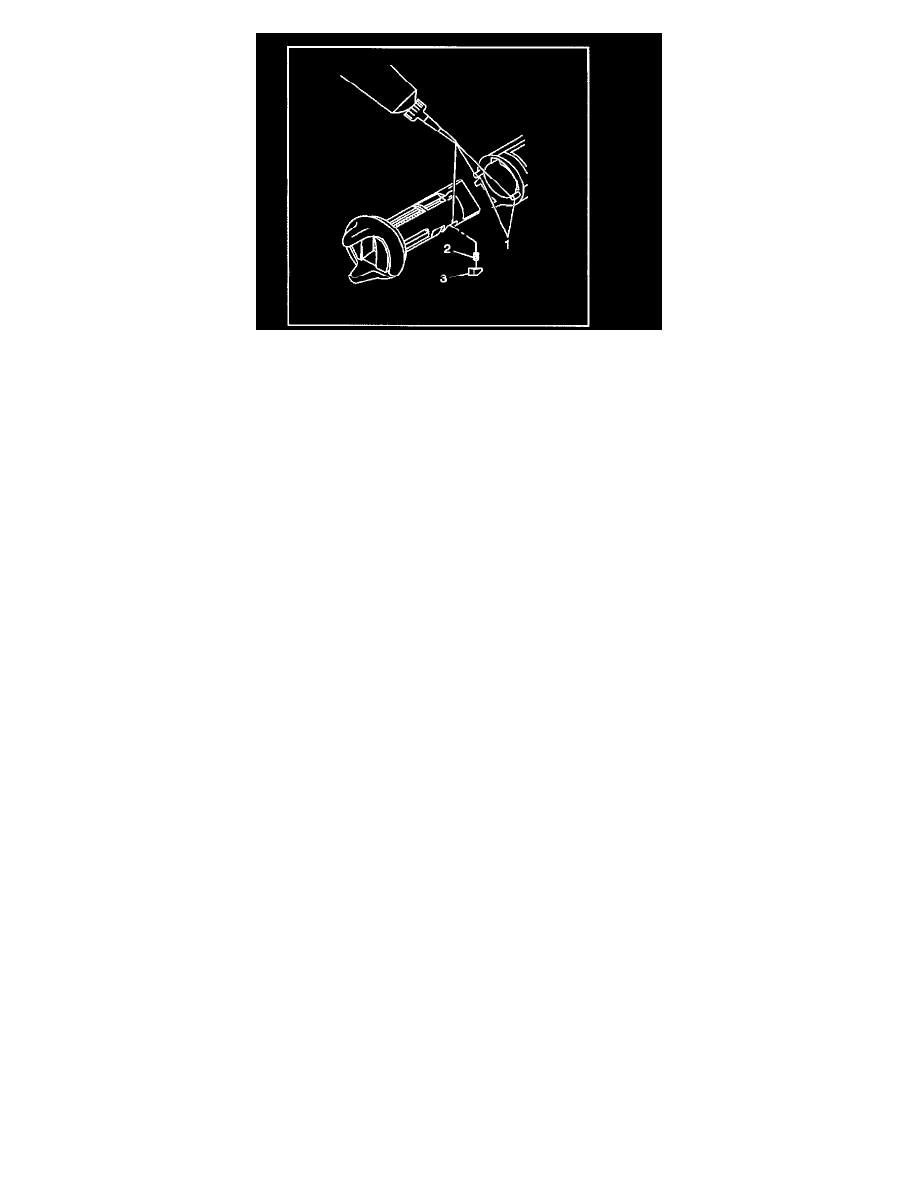Hombre S Space Cab 2WD V6-4.3L (2000)

12. Remove the lock cylinder from the J 41340.
13. Inspect that the spring retainer is properly staked. Repeat staking as needed.
14. Lubricate the lock cylinder retainer slot
15. Insert the following parts into the lock cylinder retainer slot:
-
the lock cylinder retainer spring (2)
-
the lock cylinder retainer (3)
16. Lubricate the following parts with 5W-30 motor oil or equivalent:
-
the lock cylinder housing detent pins (1)
-
the lock cylinder retainer (3)
17. Orient the lock cylinder retainer to the tapered notch in the lock cylinder housing.
18. Insert the ignition lock cylinder into the ignition lock cylinder housing.
19. Inspect for proper ignition lock cylinder rotation using the key.
IMPORTANT: Body Control Module (BCM) codes will be stored and the vehicle will not start If the ignition lock cylinder was REPLACED
and an attempt is made to start the vehicle prior to performing the theft deterrent relearn procedure.
20. Perform the theft deterrent relearn procedure if the ignition lock cylinder was REPLACED. Refer to PASSLOCK Reprogramming Auto Learn in
Theft Deterrent.
Capping Procedure For Lock Cylinders With Press-on Caps
Perform the following procedure:
1. Hold the lock cylinder so that the lock cylinder key opening is facing up.
2. Install the lock cylinder door springs and the lock cylinder door to the lock cylinder.
3. Install the lock cylinder cap over the lock cylinder door and press the lock cylinder cap down until it snaps into place.
Capping Procedure For Lock Cylinders Without Press-on Caps
Perform the following procedure:
1. Hold the lock cylinder so that the lock cylinder opening is facing up.
2. Install the lock cylinder door springs and the lock cylinder door to the lock cylinder.
3. Press and hold the lock cylinder cap down on the lock cylinder. The lock cylinder cap must be completely seated to the lock cylinder.
IMPORTANT: Ensure that the lock cylinder cap is held tight against the lock cylinder while turning the lock cylinder over so that the lock
cylinder door springs do not fall out.
4. Hold the lock cylinder cap against the lock cylinder, turn the lock cylinder over and place it face down on a surface that will allow for capping and
will not scratch the lock cylinder cap.
5. Using a blunt-ended tool, fold any two opposing lock cylinder cap tabs over the edge of the lock cylinder.
6. Inspect for proper positioning of the lock cylinder door and the lock cylinder cap by inserting the key into the lock cylinder.
7. If the lock cylinder door and cap are positioned properly, fold the remaining lock cylinder cap tabs over the edge of the lock cylinder. If the lock
cylinder door and cap are not positioned properly, repeat the capping procedure.
